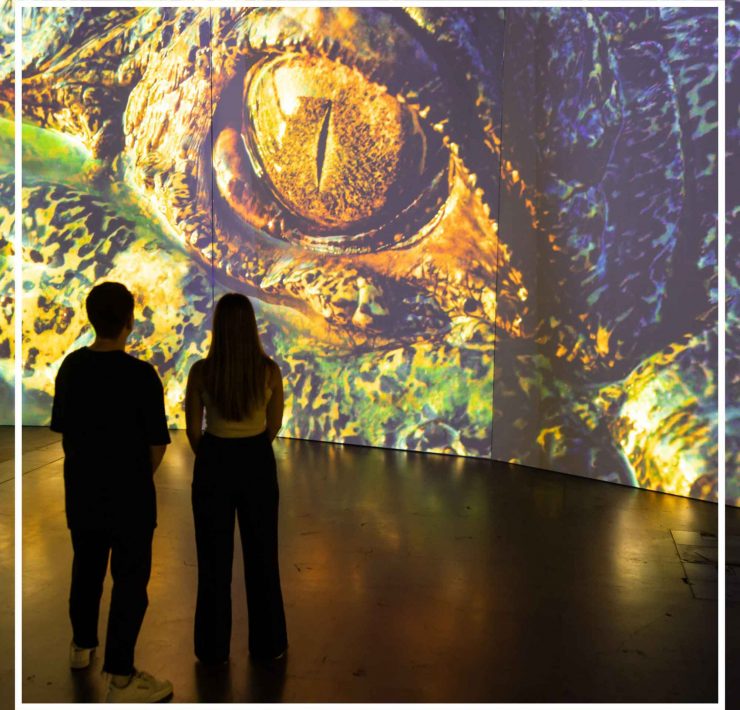Find Inner Peace At These 8 Natural Wonders In Hokkaido

Return to Wonder – Japan Endless Discovery
In recent years, a northern island in Japan has become a staple destination for culture-seekers.
Hokkaido is teeming with local restaurants that dish up authentic Japanese food, its ski resorts offer some of the country’s best slopes, and it’s home to Japan’s Indigenous Ainu people.
But Hokkaido is also home to something else – incredible natural beauty.
From wild brown bears and red-crowned cranes to towering gorges and breathtaking mountains, this sanctuary of the natural world is more than just a winter destination – it’s somewhere you can visit any time of the year and leave feeling nothing but revitalised.
Here are some of our top recommendations.
Noboribetsu Onsen

One of the many things Japan is known for is its onsens. Noboribetsu is located in Shikotsu-Toya National Park. It’s become famous for its natural hot springs – so much so that some people consider them among the top ten hot springs in the whole of Japan.
Jigokudani, which translates to ‘Hell Valley’, is in Noboribetsu City. Mineral-rich water from volcanic activity – which some people believe has healing properties – runs down into Noboribetsu, creating not just the natural hot springs, but also the perfect Hokkaido setting to unwind in.
Lake Toya

Hokkaido is well-known for its winter activities, but there’s one place you won’t be able to ice-skate even in midwinter, Lake Toya. It’s a caldera lake in Shikotsu-Toya National Park, and it’s thought to be one of the northernmost lakes in Japan that never freezes.
While ice-skating might be off the cards, there are ample ways to immerse yourself in the beauty of Lake Toya. Hiking, cycling, and camping opportunities are in abundance, offering up incredible views of the nearby – and active – volcano, Mount Usu.
Sounkyo

This range of gorges is located in the Daisetsuzan National Park and it has natural beauty that changes with the seasons.
In summer, the mountains and cliffs – which are up to 100 metres high – boast waterfalls flowing through them and hot springs you can bathe in.
The colder weather of winter transforms the gorges into an icy land of exploration, when snow settles on the mountains and the flowing water freezes into breathtaking towers of ice. There’s even an annual festival – the Sounkyo Ice Fall Festival – which is the perfect way to take in the winter wonderland.
Mount Tomamu

Up in the Hidaka Mountains in central Hokkaido, Tomamu is known by powder hounds for being a go-to ski resort.
But it’s not just a winter destination; if you visit the area from mid-May to mid-October, you can hop on board a gondola that will take you up to an observation deck called the Unkai Terrace.
It’s impossible not to be left breathless by the view – a ‘Sea of Clouds’ over the Hidaka Mountains, which span 150 kilometres across Hokkaido’s southeastern region.
Jozankei

The south-western part of Sapporo – Hokkaido’s capital city – is located near Shikotsu-Toya National Park, and it’s a place where you can do everything from skiing to horse riding.
But if you venture about an hour away from the Sapporo city centre, you’ll find yourself surrounded by beautiful ravines near the onsen town of Jozankei.
Jozankei’s magnificent canyons and lush greenery look particularly spectacular in Autumn as the leaves are changing colour. And if you want to take in all the beauty at the same time as getting a little adrenaline hit, make sure to book yourself on to a white water rafting experience down the stunning Toyohira River.
Shiretoko National Park

Shikotsu-Toya is just one of many national parks in Hokkaido that are full of opportunities for adventure. On the island’s northeastern tip is Shiretoko National Park – a UNESCO World Heritage Site, and an essential destination if catching a glimpse of some of Hokkaido’s wildlife is top of your bucket list.
Brown bears roam the national park, a wide range of marine life swims past the peninsula’s volcanic landscape, and over 285 species of birds call the park home.
And you can spot them all while hiking through meadows, manoeuvring through forests on snowshoes, or cycling along Shiretoko’s scaling mountain roads.
Kamifurano

Between December and March every year, the small town of Kamifurano is a go-to destination for people looking for some good slopes to ski.
But outside of winter, after the snowy season has ended, Kamifurano blossoms to life in spectacular floral displays – which explains its reputation as ‘The Motherland of Lavender’.
Back in 1979 Kamifurano threw its first lavender festival, and now there is no shortage of flower farms you can visit where it’s easy to spend an afternoon immersed in all the beauty.
Lake Shikotsu

If an active volcano isn’t something you thought you’d be drawn towards, this might change your mind.
Mount Tarumae is not just an active volcano, but it’s also one of the beautiful mountains that you can see from the shore of the magical Lake Shikotsu.
Lake Shikotsu is Japan’s second deepest and clearest lake, formed by the volcanic activity from the mountains that surround it.
There’s plenty to explore at Lake Shikotsu. If you want to stay dry, the fat bike cycling tour takes you into one of the forests that surrounds Lake Shikotsu. Or the clear-bottom-kayaking tour is a great way to explore the lake without getting wet.
But if you’re feeling really adventurous, you can actually rent scuba gear and go diving in the lake itself!
–
Return to Wonder – Japan National Tourism Organization www.japan.travel/en/au/









